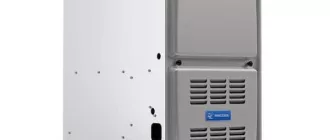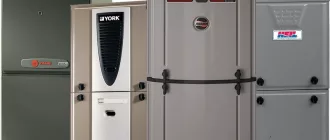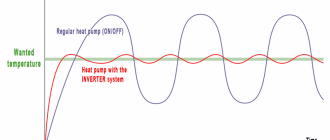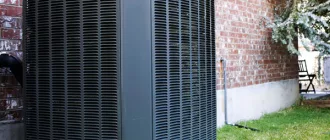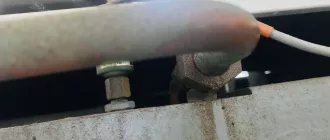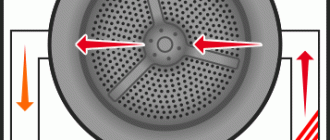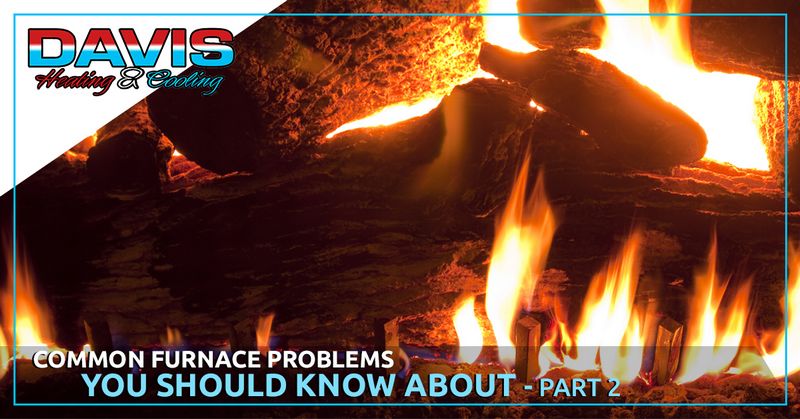
Top Furnace Problems. Part 2
When it comes to keeping your home warm and comfortable during the colder months, your furnace plays a crucial role. However, even the most reliable furnaces can experience problems that can affect their performance and efficiency. Understanding the common issues that can arise with your furnace and knowing how to troubleshoot them can save you time, money, and hassle.
One of the most common furnace problems is ignition failure. If your furnace is not turning on or has difficulty igniting, it could be due to a faulty ignition system. Ignition problems can be caused by a faulty igniter, a dirty or corroded flame sensor, or a malfunctioning gas valve. In some cases, a simple cleaning or repair may solve the issue, but in other instances, you may need to replace the faulty component.
Another common issue that homeowners face is a decrease in furnace efficiency. If you notice that your furnace is not heating your home as effectively as it used to, it could be due to a clogged air filter or a malfunctioning thermostat. Regular maintenance, such as cleaning or replacing the air filter, can help improve your furnace’s efficiency. Additionally, ensuring that your thermostat is properly calibrated and functioning correctly can also help improve heating efficiency.
Regular maintenance is key to preventing many common furnace problems. It is important to schedule annual maintenance checks and inspections to ensure that your furnace is functioning properly and to catch any potential issues early on. A professional HVAC technician can clean and inspect your furnace, identify any potential issues, and make necessary repairs or replacements. Taking proactive steps to maintain your furnace can extend its lifespan and prevent costly repairs in the future.
By understanding the common furnace problems and knowing how to troubleshoot them, you can keep your furnace running smoothly and efficiently. Whether it’s an ignition issue, a decrease in efficiency, or a thermostat malfunction, being able to identify and address the problem promptly can save you from discomfort and inconvenience. Remember, if you’re unsure or uncomfortable with troubleshooting your furnace, it’s always best to contact a professional HVAC technician who can provide expert assistance.
Sudden Heating Loss
One of the most frustrating problems that homeowners can experience with their furnace is a sudden loss of heating. This can happen unexpectedly, leaving you and your family without warmth on a cold day. There are a few possible causes for this issue.
One common problem is a faulty ignition system. If the furnace’s ignition isn’t working properly, it won’t be able to ignite the fuel and produce heat. This can result in a sudden loss of heating. In this case, it’s important to have a professional technician inspect and repair the ignition system.
Another possible cause of sudden heating loss is a clogged or dirty furnace. Over time, dust and debris can accumulate in the furnace, blocking the airflow and reducing its efficiency. This can lead to insufficient heating or a complete loss of heat. Regular maintenance and cleaning of the furnace can help prevent this problem.
A malfunctioning thermostat can also be the culprit behind sudden heating loss. If the thermostat isn’t sending the proper signals to the furnace, it may not turn on when it should or may not produce enough heat. Checking and adjusting the thermostat settings can help resolve this issue.
In some cases, sudden heating loss may be a result of poor overall furnace efficiency. If the furnace is old or hasn’t been properly maintained, it may not be able to provide the necessary heat for your home. In this situation, it may be time to consider upgrading to a more efficient furnace.
When experiencing sudden heating loss, it’s important to address the problem promptly to restore comfort to your home. Whether it’s a faulty ignition system, a clogged furnace, a malfunctioning thermostat, or poor efficiency, consulting a professional HVAC technician can help diagnose and fix the issue.
Unusual Noises
When your furnace starts making unusual noises, it is often a sign that something is wrong and requires repair. Ignoring these noises can lead to further damage and decreased efficiency of your furnace.
One common noise is a banging sound, which can indicate a problem with the furnace’s ignition. This could be caused by a faulty ignition or a buildup of gas in the combustion chamber. It is important to address this issue promptly to avoid any potential safety hazards.
Another noise to be aware of is a screeching or squealing sound. This can be caused by a malfunctioning blower motor or a loose belt. The blower motor is responsible for circulating air throughout the system, so any issues with it can impact the heating efficiency of your furnace.
A rattling or vibrating noise can indicate loose components within the furnace. This could be anything from a loose panel or ductwork to a loose motor mount. Ignoring these noises can lead to significant damage if the loose component comes dislodged and causes further issues.
If you hear a clicking noise coming from the furnace, it could be a problem with the ignition or the thermostat. It is important to have these issues addressed promptly to ensure that your furnace is functioning properly and providing efficient heating.
No matter what type of noise you are hearing from your furnace, it is important to address it as soon as possible. Consulting a professional technician can help identify and resolve any problems with your furnace, ensuring that it remains in top working condition and providing efficient heating for your home.
Blower Motor Failure
Blower motor failure is a common issue that can affect the efficiency and performance of your furnace. The blower motor is responsible for circulating air throughout the heating system, ensuring that warm air is distributed evenly throughout your home. When the blower motor fails, your furnace may not be able to provide adequate heating, resulting in discomfort and higher energy bills.
There are several potential causes for blower motor failure. One common issue is lack of maintenance. Regular maintenance is important to keep your furnace in good working condition and prevent problems like blower motor failure. It is recommended to have your furnace inspected and serviced at least once a year by a professional technician.
Another possible cause of blower motor failure is a faulty thermostat. If the thermostat is not functioning properly, it may not send the proper signals to the blower motor, causing it to fail. Checking and replacing your thermostat if necessary can help resolve this issue.
Additionally, blower motor failure can also be caused by a problem with the ignition system. If the ignition system is not working correctly, it may not properly ignite the fuel, leading to a lack of heat and eventual blower motor failure. It is important to have the ignition system inspected and repaired by a professional technician to ensure proper functioning.
If you are experiencing issues with your furnace and suspect blower motor failure, it is best to contact a professional HVAC technician for repair. They will be able to diagnose the issue and provide the necessary repairs to get your furnace back up and running efficiently.
| Lack of maintenance | – Schedule regular maintenance for your furnace |
| Faulty thermostat | – Check and replace thermostat if necessary |
| Problem with ignition system | – Have ignition system inspected and repaired by a professional technician |
Ignition Problems
Ignition problems can greatly affect the heating efficiency of a furnace, causing it to malfunction or stop working altogether. The ignition is responsible for igniting the fuel and starting the heating process in the furnace. If the ignition is faulty or not working properly, the furnace will not be able to generate heat.
Some common ignition problems include a faulty ignition switch, a clogged pilot light or burner, or a malfunctioning thermostat. These issues can prevent the ignition from creating a spark or lighting the fuel efficiently. Regular maintenance and cleaning of the ignition system can help prevent such problems.
If you are experiencing ignition problems with your furnace, it is important to address them promptly to avoid further issues. Ignition problems not only impact the heating efficiency of the furnace, but they can also pose a safety hazard. A malfunctioning ignition system can lead to gas leaks, incomplete combustion, and even carbon monoxide poisoning.
To troubleshoot ignition problems, you can start by checking the pilot light or burner for any clogs or debris. Clearing any blockages can often solve the issue. You can also check the ignition switch and thermostat for any signs of damage or malfunction. If you are unsure about how to troubleshoot or fix the problem, it is best to seek professional help.
Pilot Light Out
One of the top furnace problems that can reduce the efficiency of your heating system is a pilot light that goes out. The pilot light is responsible for the ignition of the natural gas or propane that fuels your furnace. If the pilot light goes out, your furnace will not be able to provide heat.
There are several reasons why your pilot light may go out. It could be due to a problem with the thermocouple, which is a safety device that detects whether the pilot light is lit or not. If the thermocouple detects that the pilot light is not lit, it will shut off the gas supply to prevent a potential gas leak.
Another possible cause for a pilot light going out is a dirty or clogged pilot orifice. If the orifice is blocked by debris or dirt, the pilot light may not stay lit. Cleaning the orifice can often solve this problem.
One troubleshooting tip for a pilot light that goes out is to relight it. Follow the manufacturer’s instructions on how to safely relight the pilot light. If you are unsure of how to do this, it is best to contact a professional furnace repair technician.
If you have a newer furnace with an electronic ignition system, the pilot light should automatically relight itself if it goes out. However, if the pilot light continues to go out, it could indicate a problem with the ignition system that may require professional repair.
It is important to address a pilot light that goes out promptly, as it can leave you without heat during cold weather. Regular maintenance and cleaning of your furnace can help prevent pilot light problems. Additionally, keeping the area around the furnace clear of debris and ensuring proper ventilation can also help prevent issues with the pilot light.
| Thermocouple malfunction | Check for loose connections or replace the thermocouple if necessary |
| Dirty or clogged pilot orifice | Clean orifice to remove any debris or dirt |
| Issues with the ignition system | Contact a professional furnace repair technician |
Thermostat Malfunction
One of the most common furnace problems is a thermostat malfunction. The thermostat is an essential component of your heating system as it controls the temperature in your home. When the thermostat malfunctions, it can significantly impact the efficiency of your furnace and cause heating problems.
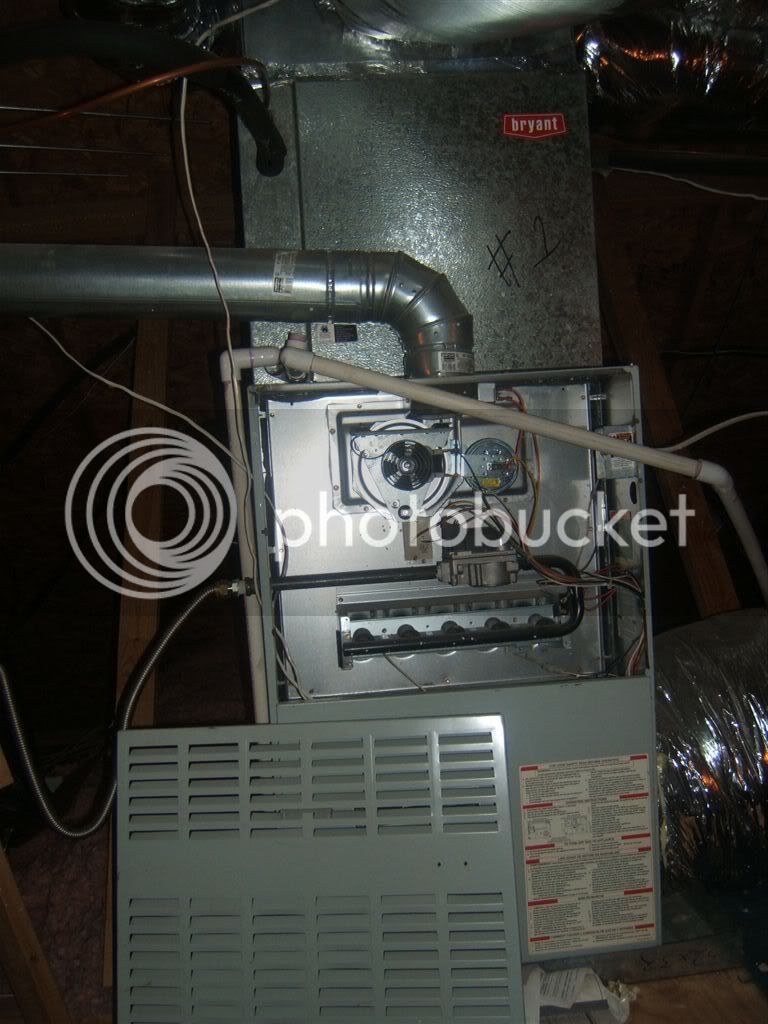
There are several signs that can indicate a thermostat malfunction. If you notice that your furnace is not turning on or off when it should, or if there are temperature fluctuations in your home, it may be a sign of a faulty thermostat. Additionally, if you set your thermostat to a certain temperature but your furnace does not reach that temperature, it could be a sign of a thermostat problem.
To troubleshoot a thermostat malfunction, there are a few steps you can take. First, check if the thermostat is properly connected to your heating system. Make sure that it is securely attached and that the wires are not damaged or loose.
Next, check the batteries if your thermostat is battery-operated. Dead or low batteries can cause the thermostat to malfunction. Replace the batteries if necessary and see if that resolves the issue.
If the thermostat appears to be properly connected and the batteries are fine, you can try resetting it. Consult your furnace manual or look for instructions online on how to reset your specific thermostat model.
If none of these troubleshooting steps fix the thermostat malfunction, it may be time to call a professional for repair or maintenance. A licensed technician can diagnose the problem and make any necessary repairs or adjustments to your thermostat.
In conclusion, a thermostat malfunction can lead to heating problems and reduced furnace efficiency. By following these troubleshooting tips and seeking professional help if needed, you can ensure that your thermostat is functioning properly and maintain a comfortable temperature in your home.
Dirty Air Filters
One of the top furnace problems that homeowners often encounter is dirty air filters. While it may seem like a small issue, dirty air filters can cause significant problems with your furnace’s efficiency and performance.
The air filter plays a crucial role in the heating process. It removes dirt, dust, and other particles from the air before it enters the furnace. Over time, these filters can become clogged with debris and restrict the airflow, causing the furnace to work harder to heat the air.
A dirty air filter can lead to several common problems. It can cause the thermostat to read incorrect temperatures, leading to discomfort in your home. Additionally, restricted airflow can put strain on the furnace, leading to increased wear and tear. This can result in costly repairs and reduced lifespan for your furnace.
To prevent these issues, it’s important to regularly replace or clean your furnace’s air filters. Most filters should be replaced every three months, or more frequently if you have pets or live in a dusty environment. Regular maintenance also includes checking the filter for any signs of damage or dirt accumulation.
Replacing or cleaning the air filter is a simple task that can greatly improve the efficiency and performance of your furnace. It can also help you save on heating costs and extend the lifespan of your system.
Ignoring the maintenance of air filters can lead to decreased heating efficiency, increased energy bills, and even ignition problems. It’s a good idea to mark your calendar or set reminders to ensure you don’t forget this important task.
In conclusion, dirty air filters can cause a range of problems for your furnace. By regularly cleaning or replacing the filters, you can ensure that your furnace operates efficiently and prevent costly repairs in the long run.
Inadequate Airflow
Inadequate airflow is a common issue that can cause problems with your furnace’s heating performance. When there is not enough airflow, your furnace will struggle to circulate warm air throughout your home efficiently. This can lead to uneven heating, cold spots, and reduced comfort.
There are several possible reasons for inadequate airflow in a furnace. One common culprit is a dirty air filter. Over time, the air filter can become clogged with dust and debris, restricting the flow of air. Regularly changing or cleaning your furnace’s air filter can help prevent this problem.
Another potential cause of inadequate airflow is a malfunctioning blower motor. The blower motor is responsible for pushing air through the ductwork and into your living spaces. If the motor is not functioning properly, it may not be able to generate enough pressure to move the air effectively.
Improperly sized ductwork can also contribute to inadequate airflow. If the ducts are too small, they may restrict the flow of air, reducing the furnace’s heating capacity. In some cases, ductwork may become damaged or blocked, further impeding airflow.
To troubleshoot inadequate airflow, start by checking your furnace’s air filter. If it is dirty, replace or clean it according to the manufacturer’s instructions. Next, ensure that all vents and registers in your home are open and unobstructed. Make sure that furniture, drapes, or other objects are not blocking the airflow.
If these steps do not improve the airflow, it may be necessary to call a professional HVAC technician for further diagnosis and repair. A technician can inspect your furnace, blower motor, and ductwork to identify and resolve any issues that may be causing inadequate airflow.
Regular maintenance of your furnace can help prevent airflow problems from occurring. Schedule annual maintenance checks to keep your furnace in peak condition and ensure that airflow is not compromised.
In conclusion, inadequate airflow can be a frustrating problem that affects the performance and comfort of your furnace. By addressing common causes and following troubleshooting steps, you can improve airflow and optimize the heating performance of your system. Don’t hesitate to seek professional help if needed to ensure that your furnace is operating efficiently.
Frequent Cycling
Frequent cycling is a common problem that homeowners may experience with their furnace. This issue occurs when the furnace continually turns on and off in short cycles.
There are several potential causes for frequent cycling. One common cause is a dirty or clogged air filter. When the air filter becomes dirty and restricted, it can cause the furnace to overheat, leading to frequent cycling.
Another possible cause of frequent cycling is a malfunctioning thermostat. If the thermostat is not properly calibrated or is faulty, it may send incorrect signals to the furnace, causing it to cycle more frequently than necessary.
Additionally, a problem with the ignition system can also result in frequent cycling. If the ignition system is not functioning correctly, the furnace may struggle to ignite and stay ignited, causing it to cycle on and off.
Frequent cycling not only disrupts the heating process, but it can also reduce the efficiency of the furnace and increase energy consumption. It’s important to address this problem promptly to avoid further issues and maintain optimal heating efficiency.
To troubleshoot frequent cycling, homeowners should start by checking and replacing the air filter if necessary. Cleaning or replacing the air filter regularly is an essential part of furnace maintenance and can help prevent frequent cycling.
If the air filter is clean, it may be necessary to recalibrate or replace the thermostat. Consulting the furnace’s manual or contacting a professional HVAC technician can provide guidance in addressing this issue.
If the ignition system is suspected to be the cause of frequent cycling, it’s best to contact a professional for inspection and repair. Attempting to fix the ignition system without proper knowledge or experience can be dangerous.
Regular maintenance of the furnace is crucial in preventing frequent cycling and other problems. Homeowners should schedule annual tune-ups and inspections by a qualified technician to ensure the furnace is functioning properly and efficiently.
Uneven Heating
Uneven heating is a common problem that many homeowners experience with their furnaces. It occurs when certain rooms or areas of the house are warmer or cooler than others, creating an uncomfortable environment. There are several possible causes for this issue, including:
- A malfunctioning thermostat: If the thermostat is not functioning properly, it can cause the furnace to turn on and off at the wrong times or fail to distribute heat evenly throughout the house. A repair or replacement of the thermostat may be necessary to resolve the issue.
- Furnace problems: Issues with the furnace itself, such as a clogged filter, a faulty blower motor, or a malfunctioning ignition, can result in uneven heating. Regular maintenance and repair of the furnace can help ensure proper functioning and efficient heating.
- Poor insulation: Insufficient insulation in certain areas of the house can lead to uneven heating. Cold air may infiltrate through windows, doors, or walls, while warm air escapes, causing certain rooms to be colder than others. Adding insulation or sealing any air leaks can help improve heating efficiency.
When dealing with uneven heating, it is important to troubleshoot the problem and address its root cause. Consulting a professional HVAC technician can help identify and resolve any underlying issues with the furnace or thermostat. Regular maintenance and prompt repairs can help ensure even heating and improve the overall efficiency of the heating system.
Fuel Supply Issues
One of the top furnace problems that homeowners may encounter is fuel supply issues. Without proper fuel supply, the furnace cannot generate the necessary heat for efficient heating. Here are some common fuel supply issues and troubleshooting tips:
- Ignition Problems: If your furnace is not igniting, it may be due to a faulty ignition system. Check the pilot light or the electronic ignition to ensure it is functioning properly. If not, contact a professional for maintenance or replacement.
- Fuel Source: Make sure your furnace has an adequate fuel source. Whether it is natural gas, propane, or oil, ensure that the supply is not depleted or turned off. Contact your fuel provider if necessary.
- Fuel Line Issues: Inspect the fuel lines connecting the furnace to the fuel source. Look for any leaks or blockages that may be preventing the fuel from reaching the furnace. This could be caused by a clog or damage to the fuel line.
- Thermostat Settings: Check the thermostat settings to ensure they are properly configured for heating. If the thermostat is not set to the desired temperature or the heating mode is turned off, the furnace may not receive the signal to start heating.
Regular maintenance is key to preventing fuel supply issues. Schedule annual tune-ups to ensure your furnace is running at peak efficiency and to catch any potential problems before they turn into major issues.
Electrical Component Failure
One of the top furnace problems that homeowners may face is electrical component failure. The electrical components in a furnace play a crucial role in its operation and should be properly maintained to ensure the system’s longevity and prevent potential issues.
There are various electrical components in a furnace, including the ignition system, thermostat, and control board. These components are responsible for regulating the heat output and ensuring the furnace operates efficiently.
If any of these components fail, it can result in a variety of problems. For example, a faulty ignition system may prevent the furnace from igniting, leading to no heat being produced. Similarly, a malfunctioning thermostat may cause the furnace to either not turn on or not turn off, resulting in inconsistent temperatures and reduced energy efficiency.
To address electrical component failure, homeowners should first consult their furnace’s manual for troubleshooting tips. In some cases, resetting the furnace or replacing a fuse may resolve the issue. However, if the problem persists, it is recommended to seek professional repair services.
Regular maintenance is key to preventing electrical component failure. Homeowners should ensure that their furnace is serviced annually by a qualified technician. This includes cleaning and inspecting the electrical components, identifying and resolving any potential issues before they escalate.
By addressing electrical component failure promptly and performing regular maintenance, homeowners can help prolong their furnace’s lifespan, ensure proper operation, and improve energy efficiency.
Condensation and Water Leaks
A common problem that many furnace owners may encounter is condensation and water leaks. This can pose a serious issue as it can lead to damage and malfunction of the furnace if not addressed promptly.
Condensation can occur when the warm air from the furnace comes into contact with cold surfaces, such as ductwork or vents, causing moisture to form. This can be particularly problematic during the winter months when temperature differences are more pronounced.
Water leaks can also be caused by various factors, including a cracked heat exchanger, clogged drain lines, or improper installation. These leaks can result in water damage to not only the furnace, but also the surrounding areas.
If you notice condensation or water leaks around your furnace, it is important to take immediate action to prevent further damage. Start by checking the condensate drain lines for any blockages or leaks. Clean any debris or buildup that may be obstructing the flow of water. If the drain lines are cracked or damaged, they may need to be replaced.
Another potential source of condensation is a faulty ignition or thermostat. If these components are not functioning properly, it can result in excessive moisture buildup. In this case, it is recommended to consult with a professional technician to diagnose and repair the issue.
Regular maintenance is key to preventing condensation and water leaks. Make sure to schedule annual furnace inspections to ensure that all components are in proper working order. Additionally, it is important to replace air filters regularly to avoid airflow restrictions that can contribute to condensation.
By addressing condensation and water leaks promptly, you can not only prevent damage to your furnace and home, but also improve its overall efficiency and extend its lifespan. If you are unsure how to troubleshoot or repair these issues, it is recommended to seek assistance from a trained HVAC technician.
Excessive Energy Consumption
One of the top furnace problems that homeowners may encounter is excessive energy consumption. This issue can lead to high heating bills and wasted energy.
Excessive energy consumption can be caused by various maintenance issues or problems with the furnace system. One common problem is a dirty or clogged air filter, which can restrict airflow and make the furnace work harder to produce heat.
Another potential cause of excessive energy consumption is a malfunctioning thermostat. If the thermostat is not accurately reading the temperature or is constantly running the furnace, it can lead to increased energy usage.
A faulty ignition system can also contribute to high energy consumption. If the ignition system is not working properly, the furnace may struggle to ignite and stay running, resulting in excessive energy usage to try to generate heat.
To address excessive energy consumption, it is important to schedule regular maintenance for your furnace. This includes cleaning or replacing the air filter, checking the thermostat for accuracy, and inspecting the ignition system for any issues.
Additionally, consider improving the overall energy efficiency of your home. Proper insulation and sealing can help reduce heat loss, allowing your furnace to operate more efficiently and consume less energy.
By addressing these common issues and performing regular maintenance, homeowners can help reduce excessive energy consumption, leading to lower heating costs and improved furnace efficiency.
Q&A:
What are some common furnace problems?
Some common furnace problems include a malfunctioning thermostat, a clogged air filter, problems with the pilot light, and issues with the blower motor.
How do I troubleshoot a malfunctioning thermostat?
If your thermostat is malfunctioning, you can try replacing the batteries, resetting the thermostat, or checking the wiring connections. If these troubleshooting steps don’t resolve the issue, it may be necessary to replace the thermostat.
What should I do if the pilot light keeps going out?
If the pilot light keeps going out, you can try relighting it following the manufacturer’s instructions. If the pilot light continues to go out, it may be a sign of a more serious problem and it’s recommended to contact a professional HVAC technician for assistance.
Why is my furnace making strange noises?
If your furnace is making strange noises, it could be due to a variety of issues, such as a loose or worn-out belt, a faulty motor, or a clogged burner. It’s best to consult a professional for diagnosis and repair.
What can cause a furnace to not heat properly?
Several factors can cause a furnace to not heat properly, including a dirty air filter, a malfunctioning thermostat, a faulty ignition system, or a problem with the blower motor. It’s important to troubleshoot and address these issues in order to restore proper heating functionality.

